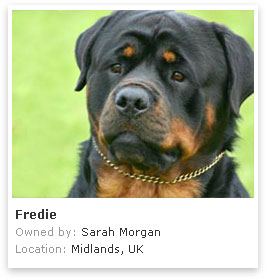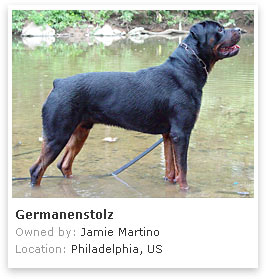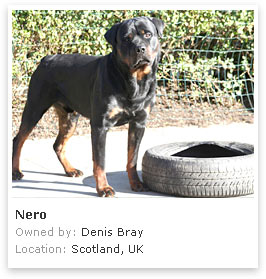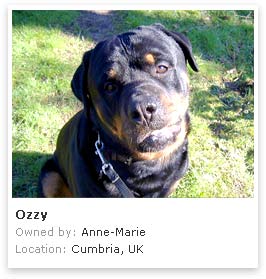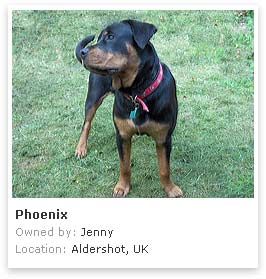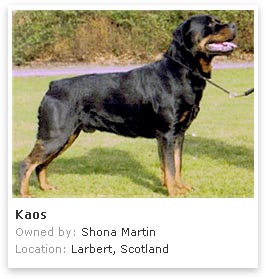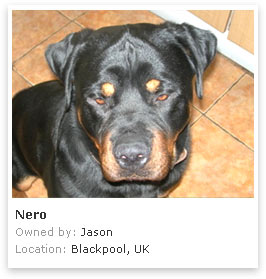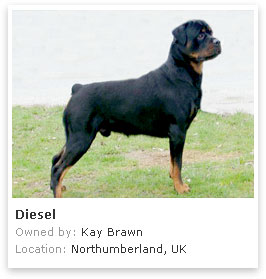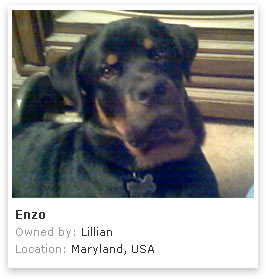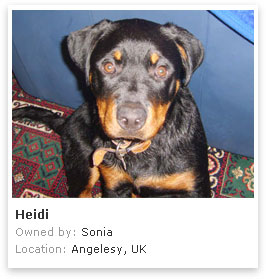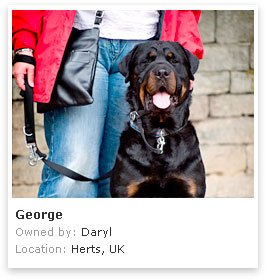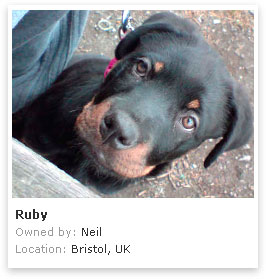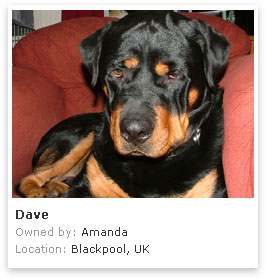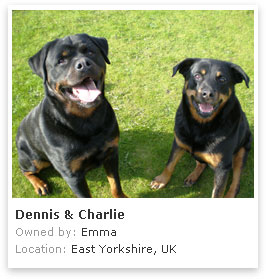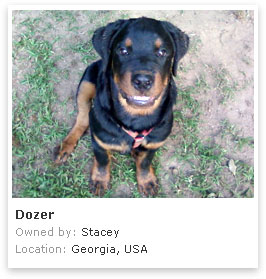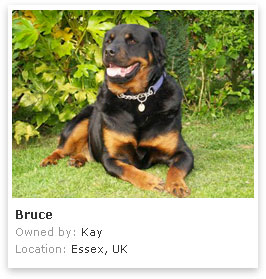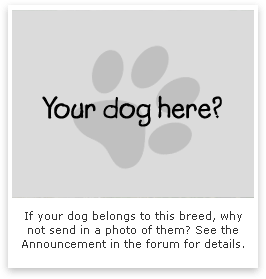OriginThe Rottweiler is believed to be descended from the dogs used by the ancient Romans to drive the cattle needed as food supplies for their armies and to guard their encampments. The breed as it is known today was developed in Rottweil, Germany, an important livestock area, where it was used to guard and drove the cattle destined for market and to guard the money which the cattle fetched. In its native land the breed is still referred to as the Rottweiler Metzgerhund (Butcher’s dog). With the advent of rail transportation in the mid 19th century the breed declined sharply in numbers, but at the start of the 20th century a breed club was formed to preserve the Rottweiler. Around 1910 they were tried out as police dogs and were found to be more than capable of handling the task. Interest in the Rottweiler as a working guard dog steadily increased as did their popularity as a companion dog. Rottweilers first came to Britain in 1936 and were exhibited at Crufts in 1937.
Character:A Rottweiler that has been conscientiously bred should be self-confident with a stable temperament which is manifested in a tranquil and good natured gaze. The guarding instinct for which this dog was bred for many years is still very much present but good breeders have done much to tone down the ‘sharpness’ of temper which carried with it a certain degree of unpredictability. The Rottweiler will, however, whole-heartedly and fearlessly protect his family and their property from any perceived threat. He will rarely bite unless under severe duress and is far more likely to hold at bay any intruder. His intense loyalty to his family means that he needs reciprocal affection and plenty of interaction in order to thrive. If relegated to the backyard and deprived of company he will become anxious and depressed and may turn to destructive chewing, nuisance barking, digging or escape attempts in order to relieve his boredom and loneliness. The dog's habit of 'bumping' with his body is believed to be a hangover from his days as a herder as this was the method he used to move recalcitrant cattle. Ownership of a Rottweiler brings with it the responsibility of ensuring that the dog should be seen as a wonderful ambassador for its breed. This takes some skill and dedication but Rottweilers deserve the best possible chance to become known as canine good citizens. In the right hands the Rottweiler is a superb family companion, but this is not the breed for everyone and is not recommended for first time owners or those who do not have the time to commit to on-going training and socialization.
Exercise:The working heritage of the Rottweiler means that he is an active and energetic dog requiring considerable amounts of exercise. He is also surprisingly fast and agile for his size. A twice daily walk of at least twenty minutes each plus the opportunity to run and play in a secure area will keep the adult Rottweiler fit and trim. It is also important to keep his mind active and sports such as agility, obedience, flyball, tracking, etc. are excellent ways to keep him in good mental as well as physical condition. He will also delight in thinking games such as finding hidden objects. As with all large breeds care must be taken not to over-exercise the growing pup as this will place a severe strain on developing joints and bones and can lead to painful and crippling problems in later life.
Training:Obedience training is essential in order that the Rottweiler who, in most instances will be stronger than his owner, is always under reliable verbal control. This is a very intelligent breed, fast learners, quick to respond to commands once they understand what is required, and very willing to please a handler for whom they have respect. The key to training is to employ firm, but fair and gentle discipline and to reward and praise enthusiastically good behaviour. If correction is necessary then voice alone should be sufficient, there is no reason to employ harsh physical methods which will simply undermine the dog’s trust and respect for his handler. Rottweilers compete very successfully in advanced obedience and do very well in the demanding sport of Schutzhund. The importance of early and constant socialization cannot be over-emphasized. The more people of all kinds that your Rottweiler meets the more confident he will become and the less likely to make errors of judgement. Adequate socialization will also ensure that he does not develop fearfulness or become over-protective or aggressive. Interaction with dogs and other animals from a young age will do much to ensure that problems do not arise later.
|
KC Group:
Working
KC, AKC, FCI recognized?
Yes
Size:
Large
Height:
Dogs: 63 - 69 cm (25 - 27 ins)
Bitches: 58 - 64 cm (23 - 25 ins)
Weight:
Dogs: 43 - 59 kg (95 - 130 lbs)
Bitches: 38 - 52 kg (85 - 115 lbs)
Colour:
Black with tan markings
Lifespan:
10 years
Coat:
Medium length, coarse, flat
Grooming:
Easy
Health issues:
Hip dysplasia, elbow dysplasia, osteochondritis dissecans (OCD), von Willebrand’s disease (VWD), sub-aortic stenosis (SAS), hypothroidism, eye problems, osteosarcoma (bone cancer), epilepsy, susceptible to bloat

|



